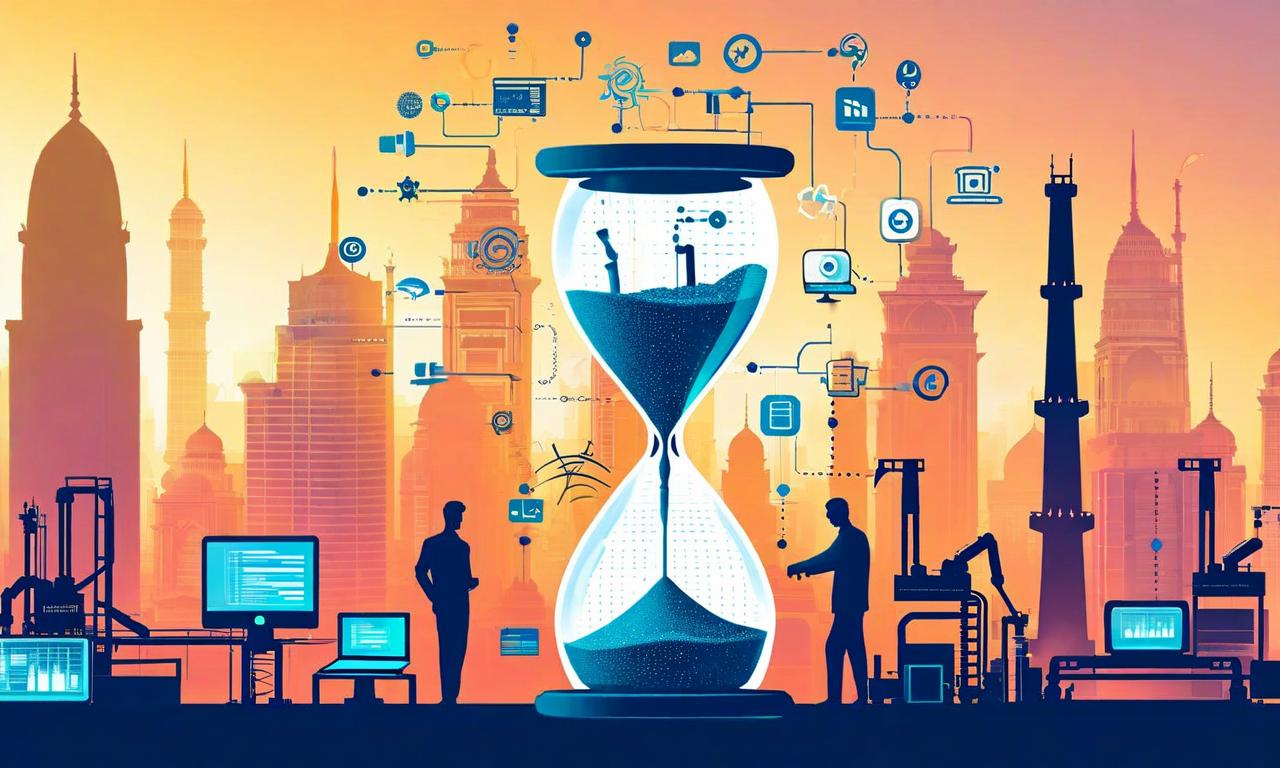Urban Company's IPO Surge and PhysicsWallah's Upcoming Listing Spotlight India's Employment Challenges
Urban Company's shares soared 62% on its first trading day, marking the best post-listing gains for a major Indian IPO in 2023. PhysicsWallah, an edutech company with nearly 100 million YouTube subscribers, is preparing for its IPO. These successes underscore India's digital progress but also highlight employment challenges. Urban Company's gig workers prefer stable factory jobs, while India's manufacturing sector has declined to 13% of GDP. The IT sector faces AI-related changes, and external pressures include proposed US tariffs and visa restrictions. Morgan Stanley reports that India will contribute one in five additions to the global working-age population in the next decade, requiring significant GDP growth to address the employment backlog.

*this image is generated using AI for illustrative purposes only.
Urban Company's stellar stock market debut and PhysicsWallah's imminent IPO underscore India's digital success story while simultaneously highlighting the nation's complex employment landscape.
Urban Company's Remarkable Debut
Urban Company, a home-services marketplace, made a splash on its first day of trading with shares soaring 62.00%. This performance marks the most impressive post-listing gains of any major Indian IPO in 2023. The company has set its sights on a substantial $21.00 billion opportunity across 200 cities in India.
PhysicsWallah: Edutech Giant Prepares for Market Entry
Meanwhile, PhysicsWallah, an edutech powerhouse boasting nearly 100 million YouTube subscribers, is gearing up for its own initial public offering. This move further exemplifies the growing prominence of India's digital sector in the public markets.
The Flip Side: Employment Challenges
While these companies represent the success of India's digitization efforts, they also bring to light significant employment challenges facing the country:
Gig Economy Concerns: Urban Company's contractors, while numerous, prefer more stable factory jobs. The company acknowledges that reclassifying these contractors as employees would adversely affect its business model.
Manufacturing Decline: India's manufacturing sector has seen a concerning drop, with its share of GDP falling to 13.00% last year—the lowest since 1960.
External Pressures: Proposed 50.00% tariffs on Indian exports to the US and restrictions on H-1B visas add to the employment pressure.
AI Impact on IT Sector: Tata Consultancy Services recently clarified that only 2.00% of its workforce might be affected by AI-related changes, refuting reports of large-scale dismissals.
The Demographic Dividend and Its Challenges
Morgan Stanley's analysis paints a stark picture of India's employment landscape:
- One in five additions to the global working-age population over the next decade will be in India.
- At current labor participation rates of 60.00%, the number of jobseekers would increase by 1.30% annually.
- However, a 6.50% GDP growth can only absorb a 1.00% increase in the workforce.
The Road Ahead
To address the employment backlog over the next decade, Morgan Stanley's economist suggests that India would need to achieve a staggering 12.00%-plus GDP expansion. This highlights the monumental task facing policymakers and businesses alike in creating sufficient job opportunities for India's growing workforce.
As Urban Company and PhysicsWallah mark significant milestones in their corporate journeys, their success stories serve as a reminder of both the immense potential and the pressing challenges in India's evolving economic landscape.

























